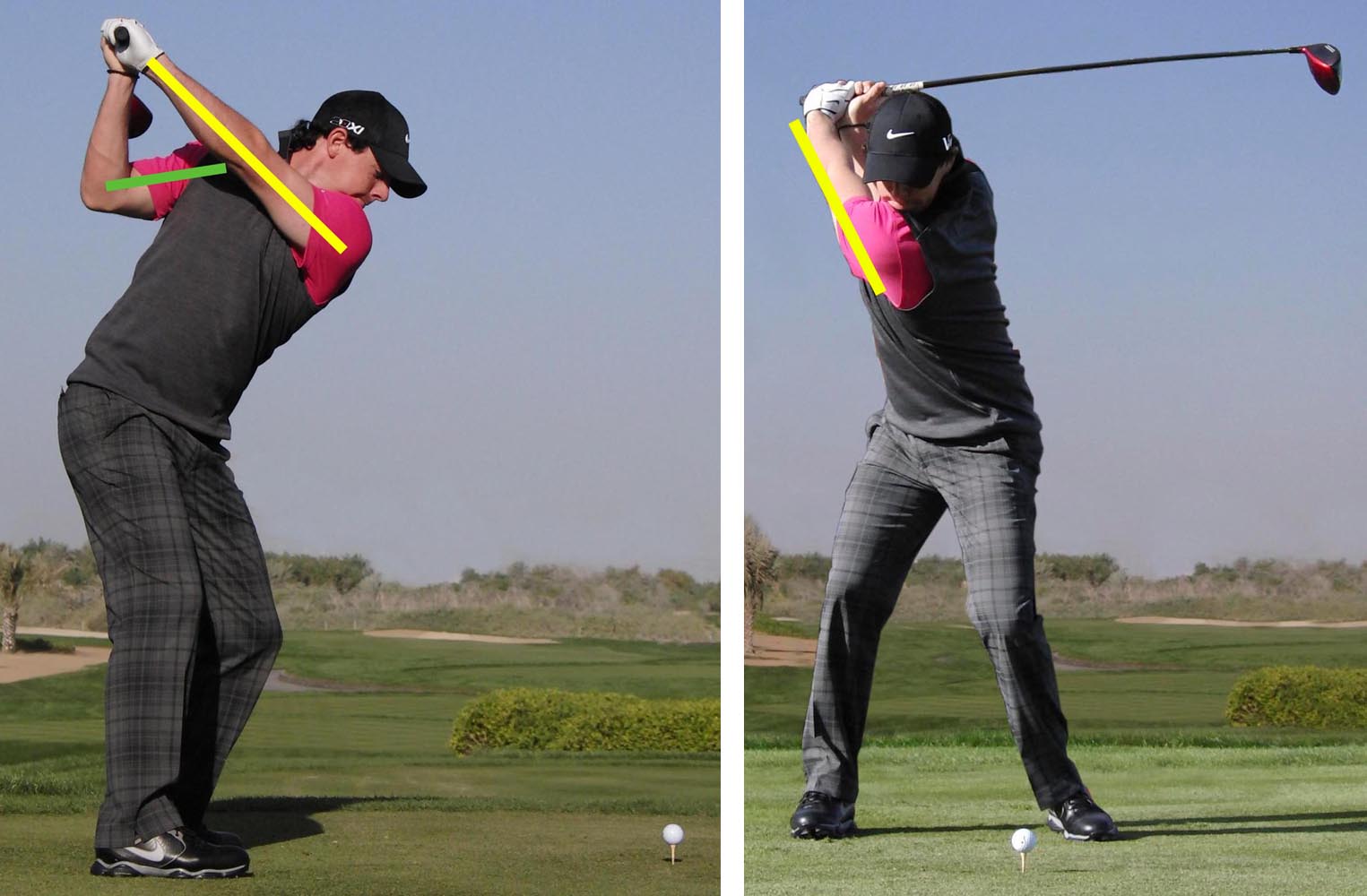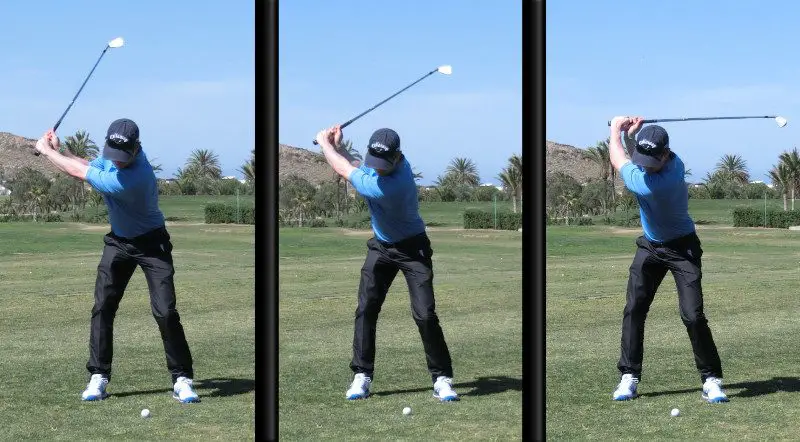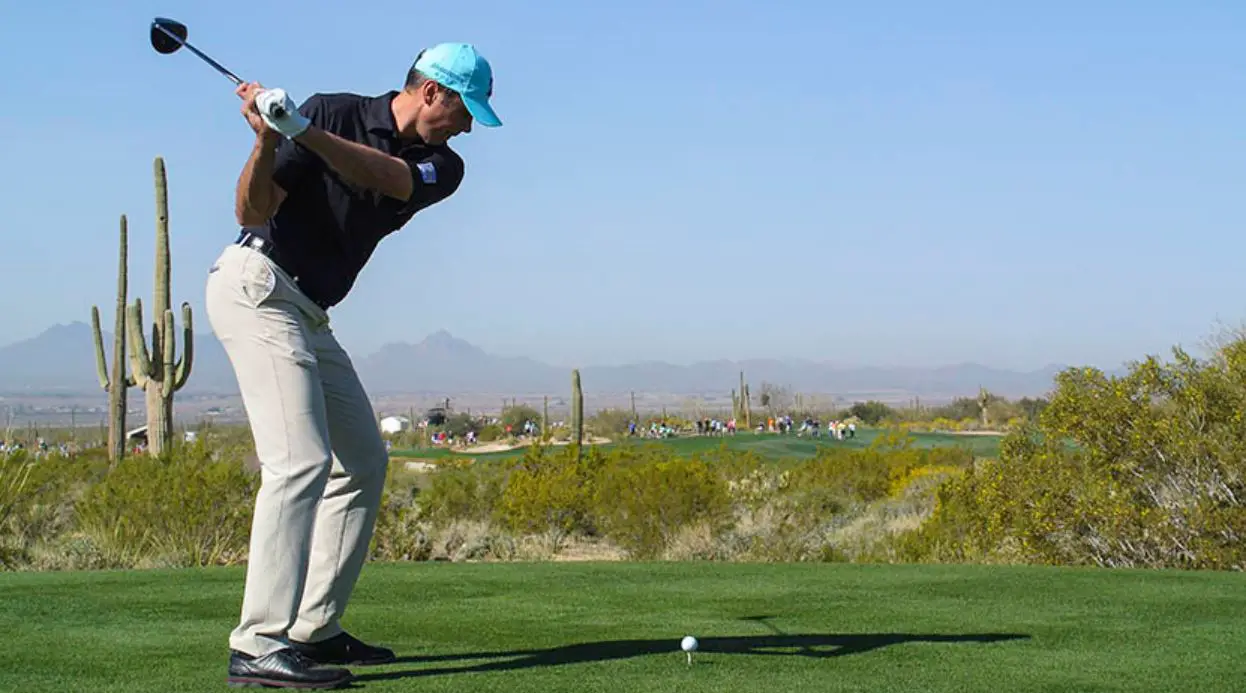Many golfers aspire to be the next Justin Rose by perfecting themselves at the backswing. And it is justified to worry about your backswing because only a good backswing technique can ensure an up-to-mark ball-hit! So, how to make a backswing the simple way?
The Aim of a Great Golf Backswing
You want a Justin Rose backswing for the following two purposes:
- Accuracy - For the right positioning of the club to hit a straight shot.
- Speed - For pumping speed into the club head by storing energy at a certain distance.
Learn To Perform A Backswing With Training Aids
Besides, there's no purpose other than these two. It is pretty much clear that a good golf shot is an amalgamation of precision and speed. The backswing is a technique that combines both of these. But before you get in position with the backswing, make sure to master a high-quality golf stance and golf grip. Let's touch upon both these aspects.
Both of these depend on the same factor: how you coil your body.
Coiling Your Body for a Great Backswing: How to Make a Backswing the Simple Way
The coil is the key to a great backswing. You need to wind up like a spring by turning your hips and shoulders, then uncoil them as you hit the ball. This will give you power and accuracy.
There are three main techniques to coil your body: the turn, the tilt, and the lean. You can use any one or a combination of them to create your coil. Experiment with each to see which works best for you.
- The Turn
Turn your hips and shoulders in sync with each other. Keep your arms to your body so that they move together.
- The Tilt
Tilt your hips and shoulders in opposite directions. This will create a coil as you turn.
- The Lean
Lean your body away from the target as you coil. This will also create power and accuracy.
Whichever technique you use, make sure to keep your head still and look at the ball throughout the backswing. Picking a focal point (e.g. the ground near your feet) can help with this.
How to Make a Backswing the Simple Way
There are six main points that you need to focus on to create a good golf backswing:
- Posture - You should be standing tall with your shoulders back and your chest out. This will give you a strong foundation from which to swing.
- Hip Movement - Your hips should rotate towards the target as you swing back. This will help you generate power for your shot.
- Arm Movement - Your arms should move in sync with your body. They should stay close to your body and be parallel with the ground at all times.
- Weight Transfer - You should move some of your weight onto your front foot as you swing back. This will help you hit the ball more easily when you uncoil later on in the swing.
- Grip Pressure - Don't grip too hard or too softly, but hold it firmly so that every movement of the club is intentional.
- Ball Position - Your ball position determines where on the club face you'll hit the ball when it starts off high, low, or towards the heel/toe end of your club face. Experiment with each position to see which works best for you.
And keeping these simple steps in mind, you will be on your way to making a great and simple backswing in no time!
Building a Golf Backswing for Accuracy
One thing which matters in terms of accuracy or precision is what experts call 'impact'. If you're able to create an impact on the golf ball and make it go straight to the hole, you're good. For a good impact, the position of your golf club matters.
Only with the right position in the backswing can a player create an absolutely gorgeous impact. So, the right position is when you can create a square swing path with a square club. But how do you achieve this?
Well, it's simple. While doing the backswing, make sure your bodyweight moves to the left of your feet. This means that if you're playing on your right foot (right handed golfers), then during the second phase of the swing, most of your club head should be moving towards your right hand (i.e. towards the hole). This will give you a square club path and an accurate impact on your ball.
Let's understand this using an example:
If you are making a perfect and simple backswing where both arms go parallel with each other and there is no difference between right arm/club and left arm/club (meaning both arms act as unit) then all your weight should be on your left foot (assuming you are right handed). Now, as you begin the downswing towards the ball, let some of your weight shift onto your front foot. This will ensure that most of the club head is moving towards your right hand or to the right side of your body during impact.
Golf Backswing Plane Affects Your Swing Path
An imaginary line that the golf club tracks during the backswing are known as the backswing plane. The club head should be aligned with the line in the image below during the takeaway phase.
It should be in a position where the golfer could see his right shoulder across his forearms, i.e., a halfway back vision. This position is very important to create a good swing path and achieve accuracy. When you deviate from this imaginary line, it affects the swing path and makes it difficult to hit the ball straight.
For instance, if you take the club too far inside or outside during the takeaway phase, it will severely affect your swing path and make it difficult to have a square clubface at impact (which is what we want). So, make sure you stay aligned with the backswing plane throughout the takeaway and all the way till impact for accurate shots.
How to Make a Backswing: Down the Line
The purpose of such a position is that the golf club should follow the square path through impact. And that happens when during the downswing, the body of the golfer is tilted towards the golf ball.
Keep reading, and you'll get to know that the positions that can be seen in pictures are not absolutely inevitable. These are simple references on how to go about it. So, try to keep your moves as close to these as possible. But an exact copy of these pictures does not make you great. The only thing important is that you achieve the optimum level of comfort along with the right position of the backswing to create a strong impact.
Golf Backswing Sequence – Face on
The second important factor in achieving accuracy in a backswing is the club's position. Experts believe that it should be in a neutral position before creating the impact. The three components which affect the performativity are:
- The golf grip which the golfer is using
- The movement of the golfer's arms
- The position of the golfer's left wrist
It might be deceptive, for it makes the club look like it is rotating open while raising. And many amateur golfers repeat this mistake. However, the left wrist remains unaffected and unchanged in a perfect backswing. The position of the left wrist must be static throughout the backswing. It is important because it ensures uninterrupted coordination of the club face with the left forearm.
Of course, the joints and sockets do cause the wrist to hinge or move. But notice in the image set above. The angle of the left wrist is well-coordinated with the club face in the following two scenarios:
- Top of the backswing (bottom right)
- Takeaway (top right)
How to Make a Backswing: Using Your Shoulders and Arms
The golfers should let their forearms take charge and rotate when the club face takes off up until the top of the backswing. Refer back to the images above to see the flexion and rotation of the right arm and the palm. A slight shoulder rotation is also noticeable, but it's natural and unavoidable.
As you can see, the right shoulder is in front of the left shoulder at the top of the backswing (image on the right). This position helps in creating power and also aids in maintaining a good swing path. If you try to rotate your shoulders instead of using your arms, you'll end up with an uncontrolled swing that will go all over the place.
So, use your arms and shoulders to create a smooth backswing that will help you achieve accuracy and power.
Putting the backswing together
Is it possible to manage a backswing with a square club face and neutral swing plane? Yes! And experts opine that it is advisable to do it midway during a backswing. This position allows your wrists to be hinged in a perfect manner. And all it takes is that golfer turns a little more to reach the complete backswing.
This "turn" is more significant for taller golfers and beginners. However, it's not mandatory to turn fully as seen in the pictures. A halfway turn is sufficient to get you in the right position. You can even use a mirror to check if you are making the right moves.
But don't forget that even the slightest inaccuracy can ruin your chances of getting a good backswing and accurate shot. So, be patient and take your time to get it right.
Golf Backswing Drill
The video lesson teaches how to get back into the ideal halfway position gently and slowly. It can be noticed that hands cover the chest, whereas the right shoulder is in the line above the club shaft.
You can check your 'on-plane' position through these two checkpoints. For adjusting the club face in an open or close position, you can simply twist or turn their left wrist. A troubling slice or a hook can be used to change the ball's flight swiftly.
As the video suggests, you are always welcome to use an umbrella or an alignment stick. You can also do the drill in front of a mirror. This way, you can figure out what's wrong and correct it effectively. And this is how you can perfect your backswing position.
Building a Powerful Golf Backswing
The second aspect of the backswing is the speed of the high club, which has an equal share in the impact. The club head's speed can be considered as 0 mph when it is on rest. And at the impact point, it reaches its maximum speed.
Note - following the steps & instructions so far can guarantee a good backswing, so keep reading and keep practicing.
Wrist Hinge in Your Backswing
The natural levers can give you a great advantage in golf. Certain mechanical advantages can be taken to calculate the input speed, which can then be used to yield high output speed.
The club head and the golfer's body require some potential energy between them during a backswing. This energy can be acquired through hinging the wrists. A full-scale wrist hinge is not required. The quantity of how much the golfer creates during the backswing is not important. What matters is the quality of how well it can be kept during the downswing. Please note that a weak left-hand grip can be troubling while the golfer tries to create a wrist hinge.
Body Turn: The Stretch-Shortening Cycle
The extent of how much you can turn your body is also a determinant while attempting a perfect backswing. Some may refer to it as shoulder turn, but in fact, the whole body turns.
The amount of internal/external hip rotation from setup and the relative rotation of the upper vs. lower body is what experts refer to as body turn.
A greater extent of rotations are signs of lengthened hip and back muscles. This means an easy contraction and shortening of muscles during a downswing. Lengthened muscles also ensure a greater force over a longer time period during a downswing.
But it must not be done after a certain limit. Experts believe that the separation created during a downswing is much more beneficial than you created during the backswing.
A golfer should try to assume a coiled-up position. This means that at the top of the backswing, you should feel some strain in the left part of the back up to the right buttock.
Weight Transfer in Your Golf Backswing
As demonstrated in the picture below, it is advisable to transfer your weight slightly on your back leg. This gives more leverage and helps in perfecting the backswing.
What to Change in Your Backswing?
Every elite player has their own style of the backswing in which they are perfect. Having said that, you can always try to adjust your golf backswing position to eradicate the issue in theirs. A hook caused by a closed club face can be fixed by improving the left wrist position along with the club face being more open on the top.
With other minor adjustments of the sort, you can achieve true perfection in the backswing. As is mentioned already, a good backswing can only guarantee a good shot!











